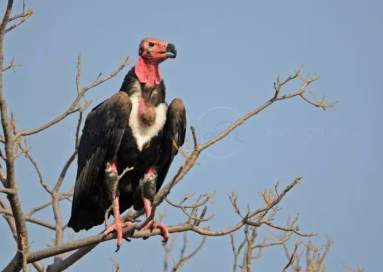Rare Red-Headed Vulture Sighting in Kasaragod
Vulture Population Status
The Red-Headed Vulture is one of the rarest in the region. Its population has dramatically declined in recent years. Historically, vultures were common in Kerala until the 1970s. Habitat loss and food scarcity contributed to their decline. The use of diclofenac in cattle has been particularly harmful. This drug is fatal to vultures that consume contaminated carcasses.
Characteristics of the Red-Headed Vulture
The Red-Headed Vulture is also known as the Asian King Vulture. It has a striking redhead and black body. The wingspan can reach up to 2.5 meters. It weighs around 5 kg and measures over 80 cm in length. This species is typically solitary, often seen alone or with a mate. It has a distinctive white patch on its abdomen.
Breeding and Habitat
Breeding occurs between November and January. The vulture is primarily found in Central India, Nepal, and parts of Southeast Asia. In India, it is seen in Kerala, Karnataka, and Tamil Nadu. Kasaragod is emerging as an avian biodiversity hotspot. The discovery of the vulture adds to the 407 bird species recorded in the district.
Conservation Efforts
Conservation efforts are underway to protect vulture populations. The reduction in diclofenac use may contribute to their recovery. Ornithologists and conservationists are encouraged by this sighting. They stress the need for habitat protection. Increased awareness is essential for the survival of these birds. The presence of the Red-Headed Vulture offers hope for future conservation efforts.
Important Facts for Exams:
- Red-Headed Vulture: This species is also known as the Asian King Vulture. It has a striking red head. Its wingspan can reach 2.5 metres. It weighs around 5 kg.
- Diclofenac: This drug is given to cattle. It is fatal to vultures that consume contaminated carcasses. Its use has contributed to vulture population decline. Conservation efforts aim to reduce diclofenac use.
- Kasaragod: This district is emerging as an avian biodiversity hotspot. It has recorded 407 bird species. The sighting of the Red-Headed Vulture is important. It reinforces the region’s importance for rare birds.
Month: Current Affairs - November, 2024
Category: Environment Current Affairs


